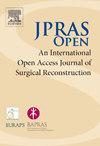Global perspectives on practices and preferences in autologous free flap breast reconstruction: From flap selection to postoperative care A descriptive quantitative study
IF 1.5
Q3 SURGERY
引用次数: 0
Abstract
Background
The purpose of this study was to evaluate the present-day practices in the preparation, peri-, and postoperative care for patients undergoing autologous free flap breast reconstructions (ABR) worldwide, with the aim of enhancing informed decision-making for plastic surgeons during the planning stages of ABR.
Methods
A global survey was conducted among 280 plastic surgeons and 39 plastic and reconstructive surgery societies worldwide, enquiring about flap and donor site selection, surgical actions, perforator imaging, and perioperative care during ABR.
Results
Eighty-two responses were received, among which 71% (n=58) were completed questionnaires. The preferred flap of choice was the deep inferior epigastric perforator flap (85%, n=51), with the internal mammary artery as the most commonly used recipient vessel. Preoperative imaging for ABR was typically performed using computed tomography angiography (75%, n=44) and often combined with a handheld Doppler. Handheld Doppler was the most frequently used modality to localize perforator vessels during surgery (33%, n=19), with the majority using either one (47%, n=24) or two (51%, n=26) perforators intraoperatively. These preferences were consistent across all clinic types.
Postoperatively, flap monitoring was primarily performed by the nursing staff, initially every hour on the first day and at reduced frequencies on subsequent days.
The most commonly used modality for monitoring flap viability was the handheld Doppler. The average length of hospital stay was 5 days.
Conclusion
This study provides valuable insights into the current preparations and peri- and postoperative care in ABR procedures worldwide, aiding in the development of standardized practices and potentially improving patient outcomes.
自体游离皮瓣乳房重建的实践和偏好:从皮瓣选择到术后护理一项描述性定量研究。
背景:本研究的目的是评估目前世界范围内接受自体游离皮瓣乳房重建(ABR)患者的准备,围手术期和术后护理的做法,旨在提高整形外科医生在ABR计划阶段的知情决策。方法:对全球280名整形外科医生和39个整形与重建外科学会进行调查,了解ABR中皮瓣和供体部位的选择、手术操作、穿支成像和围手术期护理。结果:共收到82份问卷,其中71% (n=58)完成问卷。首选的皮瓣是腹下深穿支皮瓣(85%,n=51),最常用的受体血管是乳腺内动脉。ABR的术前成像通常使用计算机断层血管造影(75%,n=44),通常结合手持式多普勒。手持式多普勒是术中定位穿支血管最常用的方式(33%,n=19),术中大多数使用一个(47%,n=24)或两个(51%,n=26)穿支。这些偏好在所有临床类型中都是一致的。术后,皮瓣监测主要由护理人员进行,最初在第一天每小时一次,随后几天减少频率。最常用的监测皮瓣活力的方式是手持式多普勒。平均住院时间为5天。结论:本研究为目前世界范围内ABR手术的准备和围术后护理提供了有价值的见解,有助于标准化实践的发展,并有可能改善患者的预后。
本文章由计算机程序翻译,如有差异,请以英文原文为准。
求助全文
约1分钟内获得全文
求助全文
来源期刊

JPRAS Open
Medicine-Surgery
CiteScore
1.60
自引率
0.00%
发文量
89
审稿时长
22 weeks
期刊介绍:
JPRAS Open is an international, open access journal dedicated to publishing case reports, short communications, and full-length articles. JPRAS Open will provide the most current source of information and references in plastic, reconstructive & aesthetic surgery. The Journal is based on the continued need to improve surgical care by providing highlights in general reconstructive surgery; cleft lip, palate and craniofacial surgery; head and neck surgery; skin cancer; breast surgery; hand surgery; lower limb trauma; burns; and aesthetic surgery. The Journal will provide authors with fast publication times.
 求助内容:
求助内容: 应助结果提醒方式:
应助结果提醒方式:


